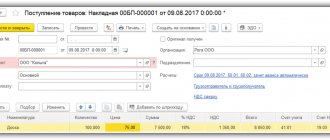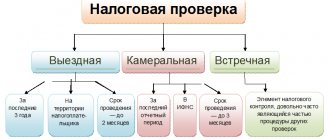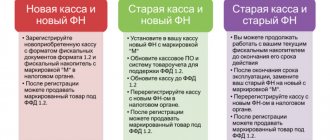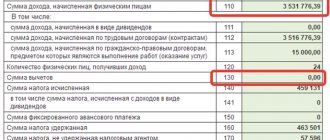On August 19, 2022, a new article of the Tax Code - 54.1, came into force, regulating the limits of the exercise of rights to calculate the tax base and the amounts of taxes and contributions. It was put into effect by Federal Law No. 163-FZ of July 18, 2017.
How should tax authorities apply the provisions of this article in practice? The Federal Tax Service recently issued recommendations on this matter.
The letter of the Federal Tax Service dated October 31, 2022 N ED-4-9/ [email protected] states that Article 54.1 of the Tax Code is aimed at preventing the use of “aggressive” tax optimization mechanisms.
From 53 to 54.1
Previously, when conducting audits, tax authorities were guided by Resolution of the Plenum of the Supreme Arbitration Court of the Russian Federation dated October 12, 2006 N 53 “On the assessment by arbitration courts of the validity of the taxpayer receiving a tax benefit.”
Article 54.1 of the Tax Code is a new approach to the problem of taxpayers’ abuse of their rights, taking into account the main aspects of established judicial practice.
The essence of the changes is that the legislator has defined specific actions of the taxpayer, which are recognized as abuse of rights, and the conditions that must be met by the taxpayer in order to be able to take into account expenses and claim tax deductions for transactions that have taken place.
At the same time, the principle of the presumption of good faith of the taxpayer remains in force.
In what cases is tax reconstruction possible? What does the Federal Tax Service letter No. BV-4-7 say?
In letter No. BV-4-7/ [email protected] dated March 10, 2021, officials officially recognized the possibility of using tax reconstruction.
This fact will allow taxpayers to count on accounting for expenses and VAT reimbursement in a situation where the transaction is recognized as real, but the counterparty, based on the results of the audit, turned out to be dishonest.
As the basis for its position, the tax service refers to the ruling of the Constitutional Court of the Russian Federation No. 2311-O dated September 29, 2020.
At the same time, the tax service admitted that with the advent of Article 54.1 of the Tax Code of the Russian Federation, there were no significant changes in tax control activities, but this article streamlined the general procedure for conducting tax audits and resolving tax disputes.
Commencement of application of Art. 54.1 NK
The concepts reflected in Resolution of the Plenum No. 53 and developed in established judicial practice, formed before the entry into force of Law No. 163-FZ, are not used within the framework of desk tax audits of tax returns (calculations) of taxpayers submitted to the tax authorities after the entry into force of the said law , as well as within the framework of conducting on-site tax audits and audits of the completeness of calculation and payment of taxes in connection with transactions between related parties, decisions on the appointment of which were made after the day the said law came into force .
Let us recall that the first sign of the use by the courts as an argument of Art. 54.1 of the Tax Code in favor of the taxpayer became the Resolution of the Thirteenth AAS dated September 13, 2017. in case No. A56-28927/2016.
Clause 1 of Article 54 of the Tax Code of the Russian Federation
Taxpayer organizations calculate the tax base at the end of each tax period on the basis of data from accounting registers and (or) on the basis of other documented data on objects subject to taxation or related to taxation.
If errors (distortions) are detected in the calculation of the tax base relating to previous tax (reporting) periods in the current tax (reporting) period, the tax base and tax amount are recalculated for the period in which these errors (distortions) were made. (As amended by Federal Law No. 137-FZ dated July 27, 2006)
If it is impossible to determine the period of errors (distortions), the tax base and tax amount are recalculated for the tax (reporting) period in which the errors (distortions) were identified. The taxpayer has the right to recalculate the tax base and the amount of tax for the tax (reporting) period in which errors (distortions) relating to previous tax (reporting) periods were identified, also in cases where the errors (distortions) led to excessive payment of tax . (Paragraph introduced - Federal Law dated July 27, 2006 No. 137-FZ; as amended by Federal Law dated November 26, 2008 No. 224-FZ)
Misrepresentation of information
Clause 1 of Art.
54.1 of the Tax Code of the Russian Federation prohibits a taxpayer from reducing the tax base and the amount of tax payable as a result of distortion of information about the facts of economic life, about objects of taxation that are subject to reflection in tax and accounting records or the tax reporting of the taxpayer. According to the Federal Tax Service, the signs of such a distortion are as follows:
- creation of a “business fragmentation” scheme aimed at the unlawful use of special regimes;
- taking actions aimed at artificially creating conditions for the use of reduced tax rates, tax benefits, and tax exemptions;
- creation of a scheme aimed at the unlawful application of the norms of international agreements on the avoidance of double taxation;
- the unreality of the transaction (operation) being executed by the parties (the absence of the fact of its completion).
What methods of distortion do taxpayers use:
- failure by the taxpayer to reflect income (revenue) from the sale of goods (work, services, property rights), including in connection with the involvement of controlled persons in business activities;
- reflection by the taxpayer in the accounting and accounting registers of obviously unreliable information about taxable objects.
Commentary on Article 54 of the Tax Code of the Russian Federation
In Art. 54 of the Tax Code of the Russian Federation contains answers to some general questions regarding the calculation of the tax base. Taxpayer organizations calculate the tax base at the end of each tax period on the basis of data from accounting registers and (or) on the basis of other documented data on objects subject to taxation or related to taxation. If errors (distortions) are detected in the calculation of the tax base relating to previous tax (reporting) periods in the current (reporting) tax period, tax liabilities are recalculated in the period of the error. If it is impossible to determine a specific period, the tax liabilities of the reporting period in which errors (distortions) were identified are adjusted (clause 1 of Article 54 of the Tax Code of the Russian Federation).
Individual entrepreneurs calculate the tax base at the end of each tax period on the basis of accounting data for income and expenses and business transactions in the manner determined by the Ministry of Finance of Russia (clause 2 of Article 54 of the Tax Code of the Russian Federation).
Evil intent
In accordance with paragraph 2 of Article 110 of the Tax Code of the Russian Federation, a tax offense is recognized as committed intentionally if the person who committed it was aware of the illegal nature of his actions (inaction), desired or consciously allowed the harmful consequences of such actions (inaction).
The intentional actions of the taxpayer may be evidenced by established facts of legal, economic and other control of the participants involved in the tax scheme.
When identifying such facts, the tax authority must take into account that the circumstances of control in themselves cannot serve as a basis for concluding that the taxpayer’s actions were intentional.
When a taxpayer interacts with formally independent persons, in a number of cases, the intentionality of actions can be indicated by circumstances that indicate the coordination of actions of participants in economic activities, the predetermination of the movement of cash and commodity flows, the commission of a number of non-random actions (operations) subordinated to a single goal - the possibility of reflecting deliberately false information about facts of economic life, creating artificial document flow and obtaining tax savings.
If there is no evidence of the taxpayer’s intent, a methodological (legal) error in itself cannot be recognized as a distortion for the purposes of applying paragraph 1 of Article 54.1 of the Tax Code of the Russian Federation.
When can you take into account deductions and expenses?
According to paragraph 2 of Article 54.1 of the Tax Code of the Russian Federation, in the absence of the circumstances provided for in paragraph 1 of this article, for transactions that have taken place, the taxpayer has the right to reduce the tax base or the amount of tax in accordance with the rules of the corresponding chapter of part two of the Tax Code of the Russian Federation, subject to the following two conditions being simultaneously met:
1) the main purpose of the transaction is not non-payment (incomplete payment) or offset (refund) of the tax amount;
2) the obligation under the transaction was fulfilled by a person who is a party to an agreement concluded with the taxpayer, or by a person to whom the obligation to perform the transaction was transferred under an agreement or law.
Tax authorities should take into account that paragraph 2 of Art. 54.1 of the Tax Code contains conditions, only under which the taxpayer has the right to take into account expenses and deductions for transactions that have taken place, that is, establishing the fact that the taxpayer has violated these conditions is a separate circumstance, in the presence of which the tax authority refuses to allow the taxpayer to take into account expenses and deductions.
Prohibitions and rights of taxpayers under Article 54.1 of the Tax Code of the Russian Federation
Art. 54.1 determines the limits of the taxpayer’s rights to calculate the amount of tax, fee, and insurance payments.
In paragraph 1 of Art. There is a ban on reducing the tax base or tax amount if the taxpayer used inaccurate data when calculating them:
- about the facts of your economic life (or their totality);
- objects of taxation to be reflected in accounting or reporting.
If a business entity uses reliable factual data when determining tax liabilities, it is allowed to reduce the tax base (clause 2 of the article in question). In this case, 2 conditions must be met simultaneously:
- the purpose of the transaction should not be directly related to the reduction of tax liabilities (non-payment (incomplete payment) and (or) offset (refund) of tax);
- the executor of the operation (transaction) must act as a party to the agreement with the taxpayer or other authorized person to whom the obligation to fulfill the agreement has been transferred (by virtue of the agreement or by law).
In the last paragraph of the article, the legislator provides a kind of concession for the taxpayer (we will talk about it later).
This article, although devoted to issues of tax benefit, does not directly explain the concept of unjustified tax benefit, in which controllers are trying to incriminate business entities. In the next section you will learn how judges interpret this concept.
See also: “The Federal Tax Service explained how taxpayer abuses are proven .
Bad Deals
Subclause 1, clause 2, art.
The Tax Code of the Russian Federation establishes a prohibition for a taxpayer to reduce the tax base or the amount of tax in cases where the main purpose of the transaction is non-payment or offset (refund) of the tax amount. In this regard, the main purpose of the transaction should be a specific reasonable economic (business) purpose, and not tax savings.
An example of such a transaction would be a business decision that is not typical of entrepreneurial turnover (the merger of a company with an accumulated loss without an asset in the absence of an economic justification, etc.) and which cannot be justified from the point of view of business risk, in fact, not made in one’s own interest, but in the interests of another person for the purpose of his hidden financing.
What should tax authorities do?
As part of the application of the provisions of Article 54.1 of the Tax Code of the Russian Federation, the tax authority must prove that the main purpose of the taxpayer entering into a transaction was not to obtain business results, but to obtain tax savings, or that the transaction was not executed by the declared counterparty, and the taxpayer used formal document flow for the purpose of unlawfully accounting for expenses and tax deduction applications.
The tax authorities must prove that such a transaction (operation) does not have any reasonable explanation from the standpoint of the economic necessity of its conclusion and completion, but is intended only to reduce tax liabilities, or is part of a scheme, the main purpose of which is to reduce tax liabilities.
No one prohibits a taxpayer from conducting his business transactions in such a way that the tax consequences are minimal, however, the transaction option chosen by the taxpayer should not contain any sign of artificiality, devoid of economic sense.
The Federal Tax Service, in turn, does not have the right to impose on the taxpayer this or that option for constructing business transactions.
Collection of evidence
What mechanisms should tax authorities use to refute the reality of a controversial transaction:
- obtaining explanations from persons who have information about the circumstances of the conclusion, completion, execution of a transaction (operation);
- conducting inspections of territories, premises, documents, objects using technical means;
- comparison of the volume of goods supplied to the size of warehouse premises (territories);
- property inventory;
- analysis and reconstruction of the full balance sheet of the enterprise (commodity balance, warehouse accounting, etc.);
- requesting documents (information), and, in necessary cases, confiscating documents (items), conducting examinations, and others;
- surveys of officials of the taxpayer being audited;
- requesting documents (information) from customers and interrogating their officials, persons exercising technical supervision;
- identifying other, “non-problematic” counterparties that provide similar work and services to the taxpayer, followed by carrying out control measures against them;
- study of local acts on the establishment of access control for protected objects, passes, registration logs.
The use of formal document flow for the purpose of illegally accounting for expenses and claiming tax deductions may be evidenced by the facts of cashing out funds by the audited taxpayer or an interdependent (controlled) person, as well as the facts of the use of such funds for the needs of the taxpayer, the founders of the taxpayer, its officials, the use of the same IP addresses , detection of seals and documentation of the counterparty on the territory (premises) of the taxpayer being inspected and others.
As part of the study of financial flows, tax authorities must take into account that the transfer of funds when carrying out transactions with a problematic counterparty, as a rule, is carried out in order to fully or partially return them to the taxpayer, an interdependent (controlled) person in cash, non-cash form, in the form of securities or in kind. The Federal Tax Service recommends that inspectors pay attention to the atypical nature of the document flow and the discrepancy between the behavior of the parties to the transaction and the usual business practices. For all such facts, it is necessary to obtain explanations from the taxpayer and responsible persons, and if information is received that contradicts the testimony of witnesses or the evidence collected, it is necessary to ensure that explanations from the taxpayer and responsible persons are received again on the identified contradictions.
When conducting interrogations of persons listed as signers of primary documents, tax authorities may confiscate handwriting samples for further handwriting examination.
At the same time, paragraph 3 of Art. 54. The Tax Code of the Russian Federation provides for several criteria that cannot independently serve as a basis for filing tax claims:
- signing of primary accounting documents by an unidentified or unauthorized person;
- violation of tax laws by the counterparty;
- the possibility of the taxpayer obtaining the same result of economic activity when performing other transactions (operations) not prohibited by law.
These criteria are enshrined in Art. 54. 1 of the Tax Code of the Russian Federation in order to exclude the possibility of tax authorities filing formal claims against taxpayers






